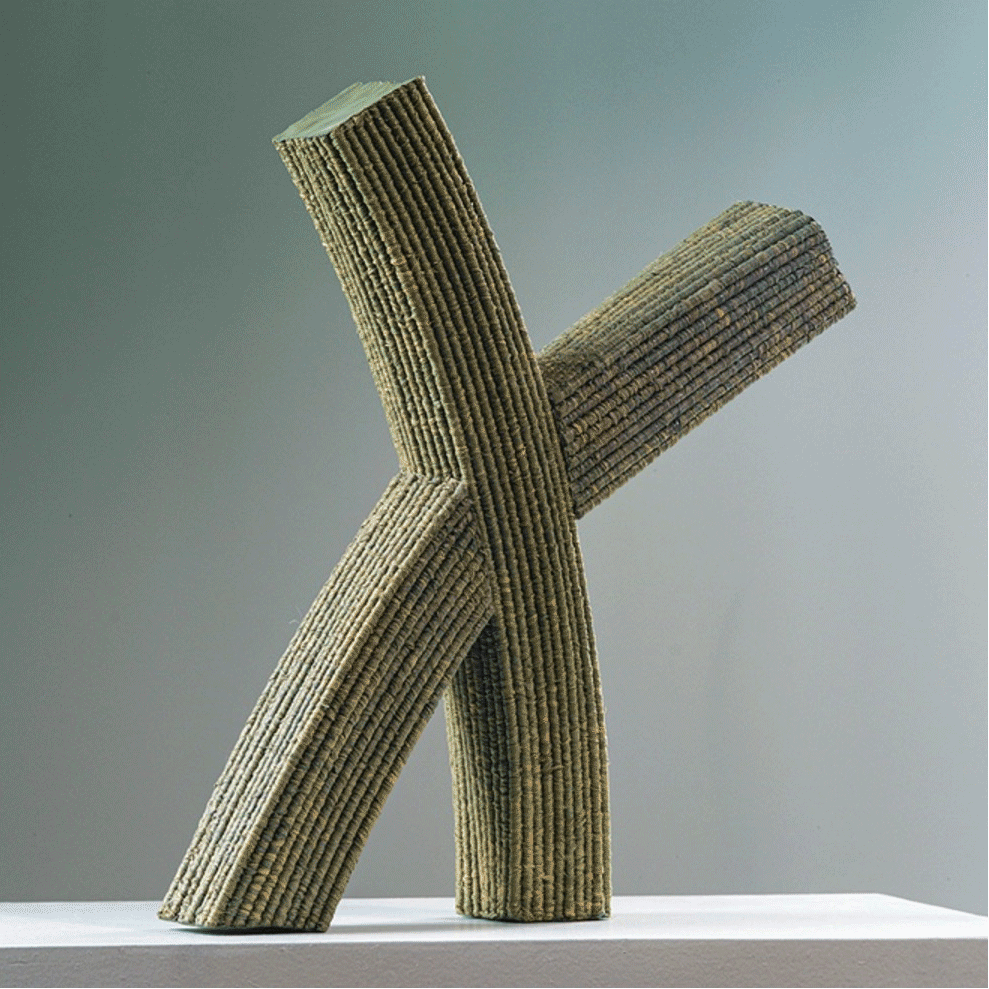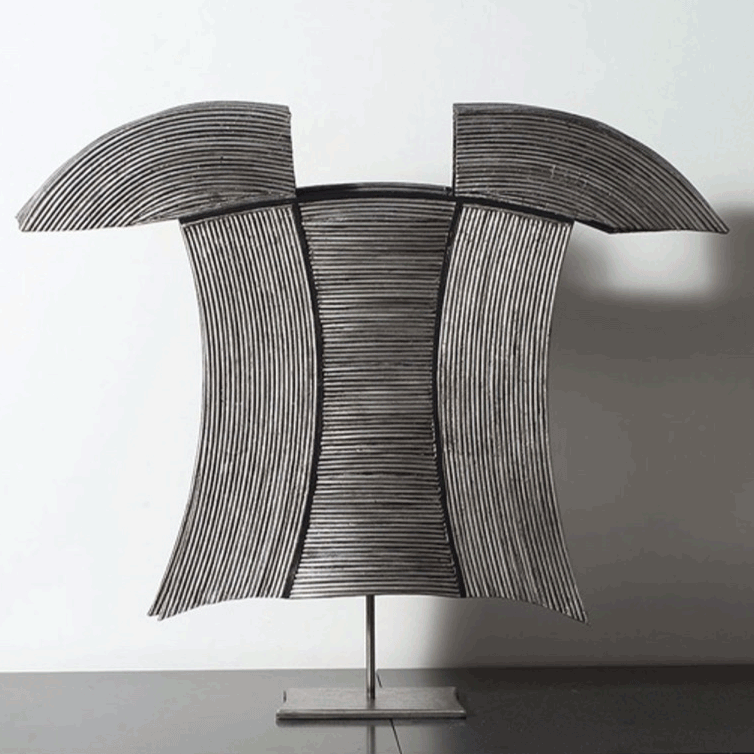Dona Anderson
NWDC is pleased to share the art and ideas of Dona Anderson.
Dona Anderson retired to Cogir Senior Living in Queen Anne, Seattle, about 3 years ago. She moved there with her husband Bob, former Mayor of Everett, who died in 2021. Together Bob and Dona Anderson were significant leaders in the capital campaign to create a new Schack Art Center, completed in 2011.
Dona’s techniques are rooted in basketry, raffia and traditional coiling but as time went by, her work become more and more complicated. In 1988, she began using round reeds and sewing them together to create architectural and more experimental forms. She is known for using existing, unusual shapely objects as foundations to make abstract and conceptual pieces.
Dona, your career as an artist spans several decades. Looking back, could you tell us how you were first introduced to art.
At about 33 years old I took a Design 101 class at Everett Community College. I had little kids at home and (my husband) Bob babysat. This changed my life! I took drawing and every art class ECC offered and made art on my dining room table. I didn’t get my first studio until I was 49 years old.
Some say artists develop creativity from experiences. Talk for a minute about your inspiration, and the experiences that fueled it over the years.
Inspiration is everywhere.
Because of Bob’s work, we traveled all over the world, including to Indonesia, Morocco, and seeing the Bilbao Museum –I appreciated all those curves and the beautiful titanium.
Antique stores, garage sales, thrift stores – I have early memories of looking around in the Everett Volunteers of America’s basement thrift store where there were so many interesting shapes. That excited me.
Oh, and tv. I usually worked with the tv on.
One time, in Amsterdam I saw a coat of arms. I wondered if I could duplicate that texture and shape using basketry techniques. I loved covering my wooden dowels in dressmaker pattern paper because it ended up looking like ikat -and paper patterns are cheap and accessible and plentiful- so after I formed a sculpture using those materials, I painted it black and then rubbed the paint off to achieve the right patina. I wanted it to look like metal, and it did!
And now for that tough question artists are often asked. Picture what you have accomplished artistically over the years, then share with us what you feel is your greatest artistic achievement.
Hmmm, possibly having my work shown at Del Mano Gallery and browngrotta. This felt like a seal of approval.
There are enumerable lists telling us the qualities of a successful artist. From your perspective as an artist, what is the quality you like most in other artists?
I like to see an artist having fun. Making art is not supposed to be torture.
What living artist do you most admire?
Well, Bob Jensen, but he died. He was fearless in his artmaking. . . . and he was magic as an art teacher.
What one thing about yourself would you change?
Well, lots of things; let’s not go there!
Visit most any artist’s home and you are bound to find what can be best summed up as a ‘Cabinet of Curiosities.” Most of it is special, but among the art there are also those really treasured possessions known only to the artist. Your home is full of wonderful art. Are we looking at a possession most treasured by Dona Anderson?
This painting. Bob came to class with me one day. Bob Jensen, my teacher, encouraged us students to let loose and get just wild. My Bob threw this red paint onto my painting, and I just LOVE it.
What has been a significant influence?
I always made it a point to go to galleries. That way you can see what’s going on outside your studio.
How has your practice changed in recent years, and what do you now see as the greatest obstacle to your creativity?
My practice is non-existent at this point. Sure, I do some coiling but it’s lopsided. My concentration is shot! I’m 95 years old. Yes, it’s frustrating.
Having been juried into Northwest Designer Craftartists in 1980, you have been a longstanding member of the organization. A membership in NWDC opens the door for a craft artist to enter an art atmosphere that is both social and professional, one that can’t help but make lasting memories. Would you mind sharing a memorable event you had after becoming a member of NWDC?
I was walking along Capitol Hill one day about eight years ago…I saw this person working in her car, working on a basket. And it was somebody who had taken a basketry class from me. Her name was June and she lived in Olympia. And so, lo and behold, we kept in touch, and she is now a member of our group. She's quit her teaching job. She is a full time artist and now she's making all kinds of things.
As a final question, tell us what do you consider to be perfect happiness?
Perfect happiness is getting to say ‘hogwash’ to something you don’t believe, like those tiresome artist statements where they use a thesaurus to write it. Fun is the most important. When I can make something that is both sculptural and whimsical, I’m happiest. Oh, I give myself lots of points for being clever. Joy sparks in me when I realize I can use a corset or dental molds in my work.
As a bonus for readers, here’s one of Dona’s artworks, and her comments about it (2013).
“We have a neighborhood garden pea patch that we plant each spring for the last five years. Our neighboring garden involved acorn squash that made its way into our garden, developing at least 12 squash before it stopped. I picked one of them and decided to use white mulberry paper to cover the squash. To my delight, it made a perfect mold. The paper came off the mold (squash) readily and was prepared for the next step.
I got so excited about it after I did the first one that I had to make a plate of them. As I progressed I appreciated the inside of them as well as the outside and wanted to detail them with a stained rattan strip around the edges, sewing with a needle and thread. They appealed to me as a group, consequently I devised a plate, also made of paper to display their charm.
We did indeed finish eating the rest of the squash that adopted our garden.”






